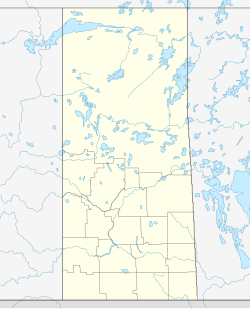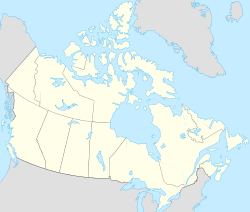Love, Saskatchewan
| Love | |
|---|---|
| Village | |
| Location of Love in Saskatchewan | |
| Coordinates: 53°29′9.44″N 104°10′2.94″W / 53.4859556°N 104.1674833°WCoordinates: 53°29′9.44″N 104°10′2.94″W / 53.4859556°N 104.1674833°W | |
| Country | Canada |
| Province | Saskatchewan |
| Census division | 6 |
| Rural Municipality | Torch River No. 488 |
| Post office Founded | 1935 |
| Government | |
| • Mayor | Valerie Rodgers |
| • Administrator | Cindy Bowes |
| • Governing body | Love Village Council |
| Area | |
| • Total | 0.46 km2 (0.18 sq mi) |
| Population (2011) | |
| • Total | 65 |
| • Density | 140.4/km2 (364/sq mi) |
| Time zone | CST |
| Postal code | S0J 1P0 |
| Area code(s) | 306 |
| Highways | Highway |
| Website | Official website |
Love is a small village in the province of Saskatchewan, northeast of Prince Albert.
It is known for its unique name and a special postmark, which is a teddy bear holding a heart.
(Information gleaned from the Love history book "Love At First Site" and interviews with residents.)
The village of Love, Saskatchewan got its start in 1934 with the building of a general store by William (Bill) Sears with the assistance of Emery Long. The store was built on the north side of the Canadian Pacific Railway tracks which came through the area in 1929. In 1935 a post office was established in Sear's Store with Mr. Sears as postmaster.
The first houses were built by Eldon Lamb and Walter and Myrtle Haight and in 1936 Grant and Ray Emery built a general store for Lamb and Earl Johnston who were operating a lumber mill and planer nearby. Since the mill operated all year round, many of the employees built homes (usually little more than shacks) and moved their families to the fledgling community. In the beginning there was no town-site laid out so the homes were built helter‑skelter wherever there was room.
In 1939 the provincial government offered 35 acres (140,000 m2) for sale on the east side of the SW‑16‑52‑15‑W2. Because the homeowners wanted title to their property the Love Development Company was formed to tender a bid on the land. They were successful in their bid of $1200.00 and later that year the town-site was surveyed at a cost of $600.00. Lots were sold at $50.00, $75.00 and $100.00. Anyone who already lived on one of the lots had the option of purchasing it.
In June 1945 the community was granted village status. In July 1945 the first council meeting for the Village of Love was held and it was decided that the village would buy out the Love Development Company and assume all of its assets.
The village owed its existence to the various lumber mills located in and around its boundaries. The majority of the residents of the village were mill employees and the peak population was approximately 250 souls.
These area lumber mills included Lamb and Johnston, Johnsson Brothers and Ostberg, Bell and Blais, King Brothers, Lamb and Sons Lumber Company, Gunder Thompson and many others. Most of these mills operated at various times throughout the late 1930s, 1940s and into the 1950s until good timber berths became scarce.
In the early years the village was called Love Siding because of the railroad siding located there and many old-timers still use that term. The siding was provided by the Canadian Pacific Railway (CPR) for the loading of firewood, pulp, lumber and other forest products. The railroad was also used by the local homesteaders to ship their farm produce to market when the time came that they produced more than could be sold locally.
...
Wikipedia


